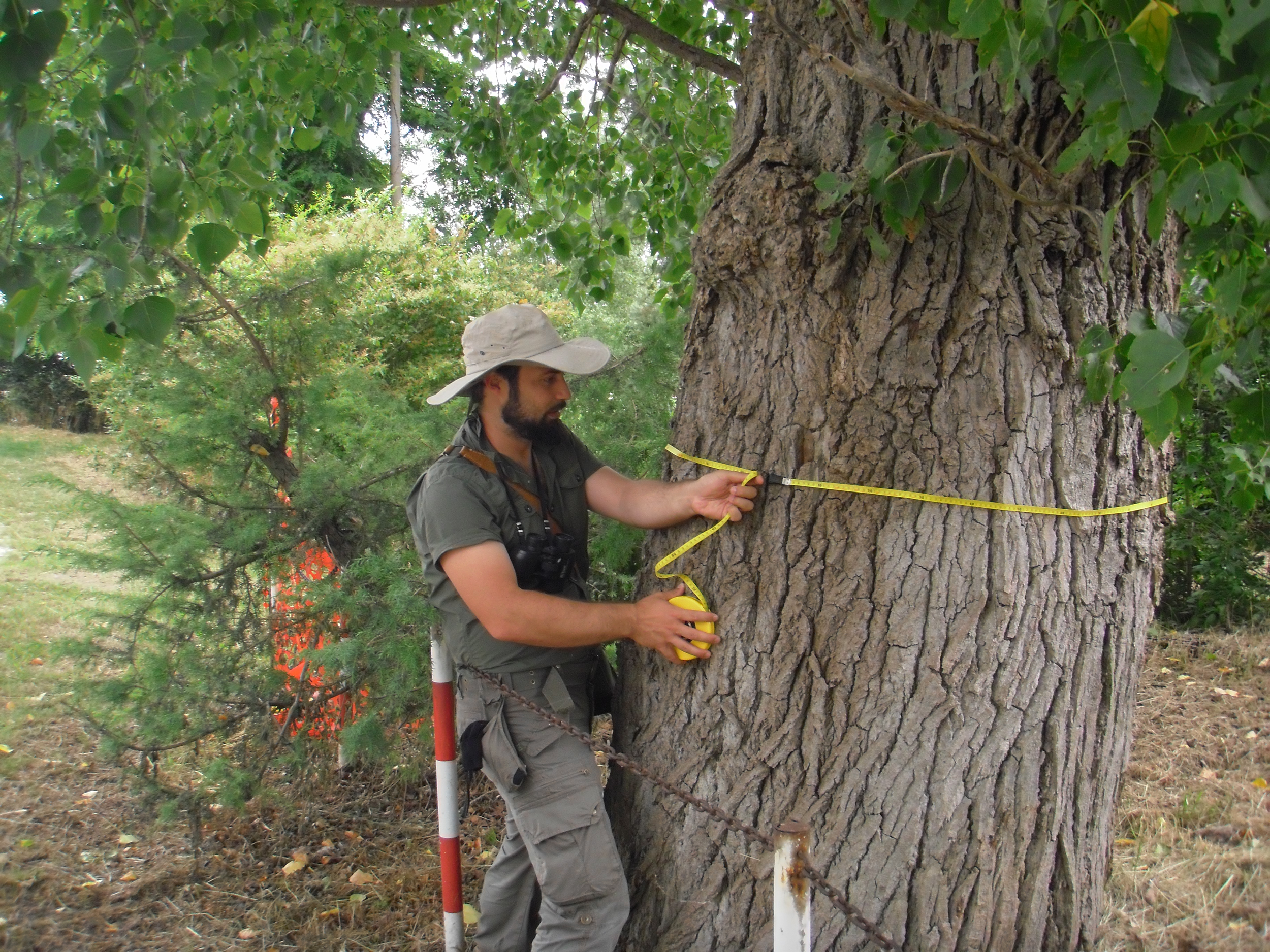Braun-Blanquet method
The Braun-Blanquet method is traditionally used to describe the vegetation structure, that is the way in which the various components of the vegetation cover are arranged within a certain environment. The survey involves the identification of a homogeneous area, based on physiographic and landscape criteria, which is a representative sample of the vegetation to be studied: a sheet showing the percentages of vegetation coverage for each range of height considered is filled (seven intervals, from 23 cm to 25 m); the floristic list is drawn up for each range; the percentage of covering is determined for each of the identified species. The data obtained can be used as a synthetic descriptor of the plant community in the area or be further processed (e.g. through cluster analysis or other statistical methods).
Analysis through floristic transects
The relief’s execution consists in going through a linear transect, possibly straight and having a defined length, writing down the floristic population’s composition and the frequency with which each species is detected. Unlike the descriptive methods (like The Braun-Blanquet) this constitutes a statistical sampling (where there is a correlation between the frequency of the species found and their coverage). In the presence of an impact gradient, the method is suitable for monitoring vegetation sample strips, allowing to highlight changes in the floristic composition between the proximal and distal band (probably not impacted). Thanks to its speed of execution and high repeatability, the method can be frequently repeated, so as to be functional to the analysis of possible impacts, due to the construction of infrastructure (ante-operam, currently ongoing and post-operam).
Analysis on valuable arboreal specimens
The phytosanitary investigation on valuable arboreal specimens is based on principles expressed by the VTA (Visual Tree Assessment) protocol: through visual analysis, verifying the crown, the presence of dry wood parts, cords, fungal bodies, wounds or other symptoms, it is possible to diagnose the specimen’s health, in order to estimate the effect of any impact and/or propose corrective actions. The evaluated parameters include species and social position, morphometric characteristics, the crown’s posture as well as all the macroscopic changes affecting the epigean apparatus.
LBI (Lichenic Biodiversity Index)
The Lichenic Biodiversity Index allows to estimate the state of lichen diversity under standard conditions after long exposure to air pollution and/or other types of environmental stress. The method applies only to epiphytic lichens, in order to limit the variability of ecological parameters independent of pollution and related to the lithic substrate.


